Dealing with a dishwasher that won’t drain can be an exasperating and time-consuming issue. It is even worse when the dishwasher in question is a KitchenAid, which has become synonymous with quality and reliability. If you find yourself in this situation, don’t worry; it can usually be fixed without having to call an expensive repairman.
We’ll also provide some helpful tips on preventive maintenance so that you won’t have to go through all this trouble again!
Dishwasher Drain Hose Obstruction
Before anything else, inspect if there is an obstruction in the drain hose. This is a common issue and can be easily fixed. Firstly, make sure to unplug the dishwasher and remove the lower access panel so that you can reach what’s inside.

Inspect the drain hose for any obstructions that may impede water drainage. If there is a kink or bend, use pliers to carefully straighten it out. You should also check for any blockages such as pieces of food or other debris in the drain hose. If you find anything blocking the flow of water, remove it and dispose of it properly.
Once you’ve checked for and cleared any obstructions in the drain hose, reassemble the dishwasher and plug it back into the power outlet. Restart the dishwasher cycle to see if that has fixed the issue.
How To Unclog A Kitchenaid Dishwasher Drain Hose
The first step in troubleshooting Dishwasher not draining is to check for a blockage or obstruction in the drain hose. Clogged hoses are frequently the culprit of blockages, caused by stray food particles, miniscule toys or other items that made their way into the hose. To unclog it, you will need to:
- To start your maintenance process, carefully unplug the dishwasher from its power outlet;
- Pull out the dishwasher and locate the drain hose;
- Use a flashlight to inspect it for any objects or blockage;
- Remove any obstructions with needle nose pliers or tweezers. [1]
Clogged Kitchenaid Dishwasher Filter
If you find that water is not draining from your KitchenAid dishwasher, it could be the result of a clogged filter. To ensure maximum efficiency, it’s essential to examine the filter for any obstructions that may be hindering its performance. Unearth the filter at the base of your dishwasher, close to where the drain hose is situated.
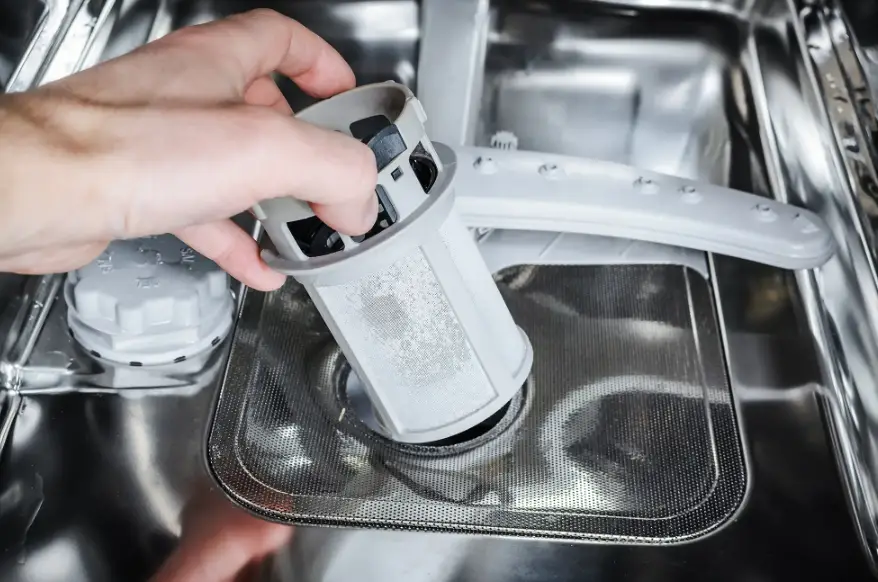
Before inspecting the filter, ensure that both the water supply and power to your dishwasher are off. Carefully slide out the dishwasher rack and remove any dishes that may be blocking access to the filter. Then use a screwdriver or Allen wrench to unscrew the filter cover from inside the dishwasher.
Gain access to the filter, then take out any particles or objects blocking it for optimal efficiency. Be sure to thoroughly clean the filter using a brush and warm soapy water. Once all particles are removed, replace the filter cover and reattach it to the dishwasher with your screwdriver or Allen wrench.
Finally, turn on the power supply to the dishwasher and let it fill with water. If your dishwasher is still not draining, you ought to inspect other components of the appliance for potential build-up or obstructions.
How To Unclog A Kitchenaid Dishwasher Drain Filter
If your KitchenAid dishwasher isn’t draining water properly, check the filter; a clogged filter is often the culprit. Thankfully, it’s effortless to unclog your dishwasher filter with just several straightforward steps.
- Start by unplugging the dishwasher from its power source.
- Locate the filter at the bottom of your dishwasher and carefully remove it. You may need to use pliers or a screwdriver to lift it off from where it is attached inside the machine.
- Remove any debris, such as pieces of broken dish, food particles, or other debris from inside the filter, using a cloth or paper towel to wipe away anything that is blocking the filter’s holes.
- Reattach the filter and plug in your dishwasher.
- Run a cycle to ensure that it is working correctly now that the filter is unclogged. [2]
Dishwasher Drain Pump Malfunction
KitchenAid dishwashers can be a reliable kitchen assistant, but even the most dependable machines may need some upkeep sometimes. If your dishes stay wet after the cycle has finished, it’s likely that the drain pump isn’t working as expected! Thankfully this fix is often easy to diagnose and repair – giving you one less stress in life when doing all those chores around home.
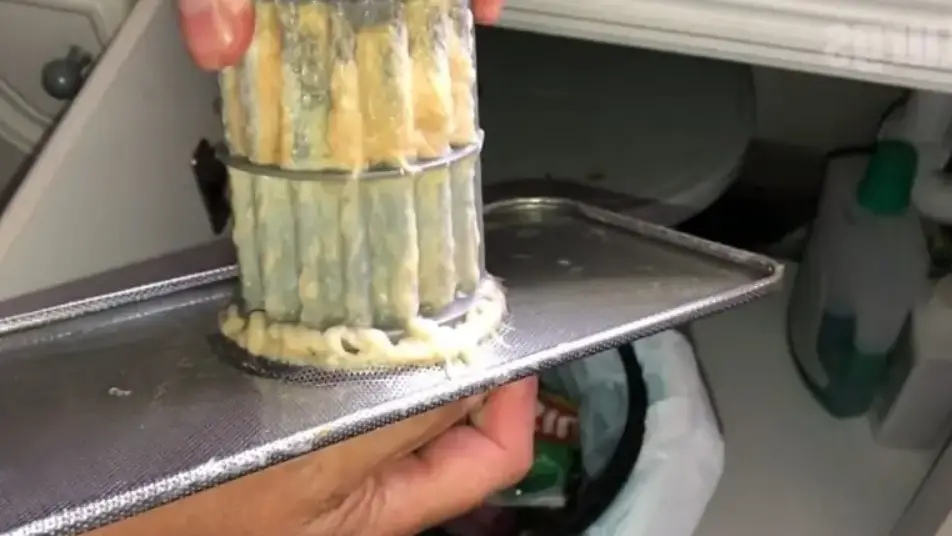
To troubleshoot this issue, you should first check for any debris or objects that may be blocking the drain pump. This may involve pieces of food, cutlery and other tiny items that could hinder its performance. If you find such an item, remove it carefully and then attempt to run a cycle again.
Check Air Gap And Garbage Disposal
In order to fix this problem, begin by assessing the air gap and garbage disposal. An air gap, which looks like a small metal cap above the sink, is designed to prevent waste water from entering the dishwasher. The garbage disposal can also be a source of blockage if it is clogged or obstructed. If either the air gap or garbage disposal is blocked, your dishwasher will be unable to flush out its waste and debris properly. To resolve this issue, unclog any hindrances from the air gap or garbage disposal and guarantee that it is flowing effortlessly.
Possible Failed Parts When Your Dishwasher Won’t Drain
If your KitchenAid dishwasher isn’t draining properly, the cause may be attributed to a malfunctioning motor or pump – or any of its other components. The most common causes for failure can include:
- A broken impeller: The impeller drives water through the dishwasher’s drain hose, ensuring it reaches its intended destination. If the dishwasher isn’t operating properly, it likely won’t be able to drain out its water.
- A faulty motor: The dishwasher’s motor is responsible for spinning the impeller and circulating water. When it fails, the impeller can’t do its job properly.
- Clogged drain hose: Food particles and other residues can accumulate in the drain hose, potentially resulting in a blocked pipe. By blocking the dishwasher’s drainage, this prevents it from running properly.
- Faulty pump: The pump plays a pivotal role in the dishwasher’s cycle, driving water through its circuits and discharging it via the drain hose. If this component malfunctions, the dishwasher will be unable to drain efficiently. [3]
How To Prevent Dishwasher Clogs
Clogged dishwashers can lead to a variety of problems, including poor draining. Taking the time to take preventative measures can help you avoid clogs in the first place and save you from having to deal with a dishwasher not draining issue.
Here are some tips for preventing clogs in your KitchenAid dishwasher:
- Make sure to scrape off any large food particles before putting dishes in the dishwasher. This will help eliminate chunks of food residue that can clog the pipes or strainer basket.
- Ensure you give all of your pots, pans and dishes a thorough rinse before loading them into the dishwasher for optimal cleaning. To avoid any plumbing-related issues, this will eliminate excess grease and other food remnants that can get trapped in the pipes.
- Avoid pre-washing dishes in the sink, as this will increase the chances of food particles getting into your dishwasher’s pipe system and causing a clog.
- To ensure the best possible performance and longevity of your strainer basket, clean it out regularly to discard any food particles or debris that may have built up.
Tips To Fixing Kitchenaid Not Draining
Check the Dishwasher Filter: IIf your KitchenAid dishwasher isn’t disposing of water, it could be caused by a blocked filter. To evaluate the filter’s condition, open up your dishwasher and identify where the filter assembly is. Carefully take the dishwasher out and remove any dirt or detritus that may be lodged in its filter.
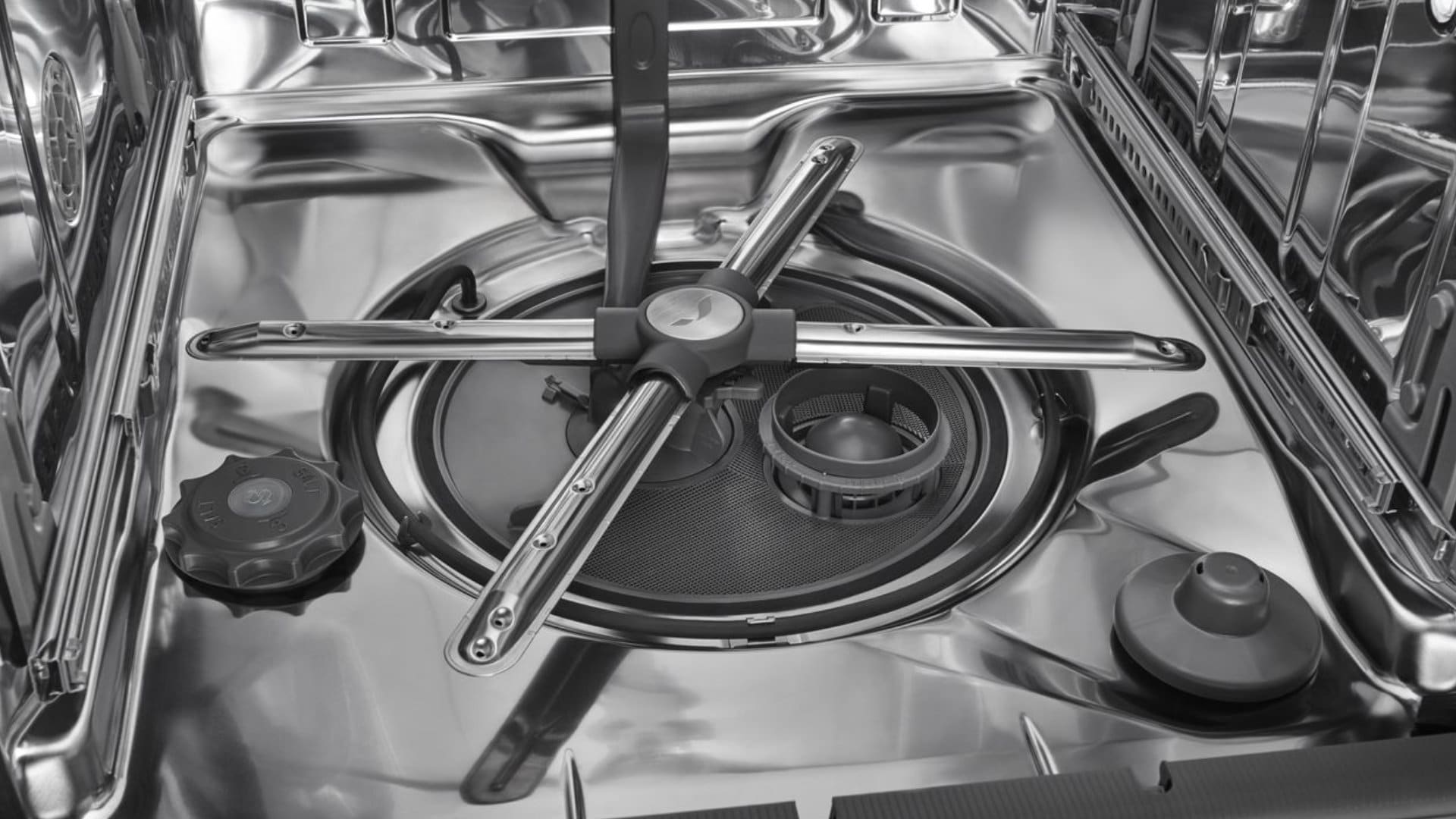
Inspect the Garbage Disposal: If you possess a garbage disposal, it’s likely that food waste and particles have been obstructing the drain tube of your dishwasher. To troubleshoot this, disconnect the drainage hose from your garbage disposal and inspect it for any blockage. If you encounter any blockages, utilize a plunger or pipe snake to effortlessly clear the clog.
Clean the Drain Hose: Locate the dishwasher drain hose and inspect it for kinks or clogs. If you find any, disconnect the hose and clean it with a brush.
Check the Drain Pump: If your dishwasher isn’t properly draining, the drain pump could be blocked or clogged and requiring attention. To ensure proper draining, find your dishwasher’s drain pump and remove any obstructions that may be blocking it.
Inspect the Drain Valve: If the drain valve is clogged, it can obstruct your dishwasher from properly draining its water. To confirm this, locate the drain valve and give it a thorough scrub with a brush to eliminate any clogs. [4]
FAQ
What would cause a KitchenAid dishwasher not to drain?
If your dishwasher has stopped draining, it could be the result of clogs, kinks in the drain hose, malfunctioning water intake valves or a broken pump impeller. One possible explanation could be a defective float switch or timer motor that is unable to progress the cycle accordingly.
Why does my KitchenAid dishwasher have water in the bottom?
If you are noticing water at the bottom of your KitchenAid dishwasher, there could be a variety of potential explanations. The most probable culprits behind a washing machine malfunction are typically clogged filters, hose kinks, or an inactive drain pump. To determine the root of your dishwasher’s draining issue and repair it, you must first identify what is causing the problem.
How do you fix a dishwasher that won’t drain completely?
If you’re experiencing incomplete draining with your KitchenAid dishwasher, the issue can be solved through troubleshooting. Clogged hoses are the most likely cause of this problem. If your dishwasher is connected to a garbage disposal unit, there could be an issue with the disposer itself not breaking down food particles sufficiently and thus obstructing drainage. Other causes of incomplete drainage may include a malfunctioning impeller, pump motor, or timer.
How do you force a dishwasher to drain?
The best way to force a KitchenAid to drain is to use a utility pump. To get rid of the water, connect your pump hose to the dishwasher’s drain hose. It’s as simple as that. This method is relatively simple and can be done in a few steps:
- Put on gloves and access the underside of the dishwasher
- Track down the drain hose and unplug it from the appliance
- Connect the hose to the utility pump and plug it in
- Place a bucket underneath the dishwasher to catch any water that drains out
- Turn on the utility pump and let it do its job until all of the water has been drained out.
- Unplug the pump and disconnect the hose from the pump before removing it.
- Reattach the drain hose to your dishwasher firmly and turn off the pump provided by the utility.
What causes water to stand in the bottom of a dishwasher?
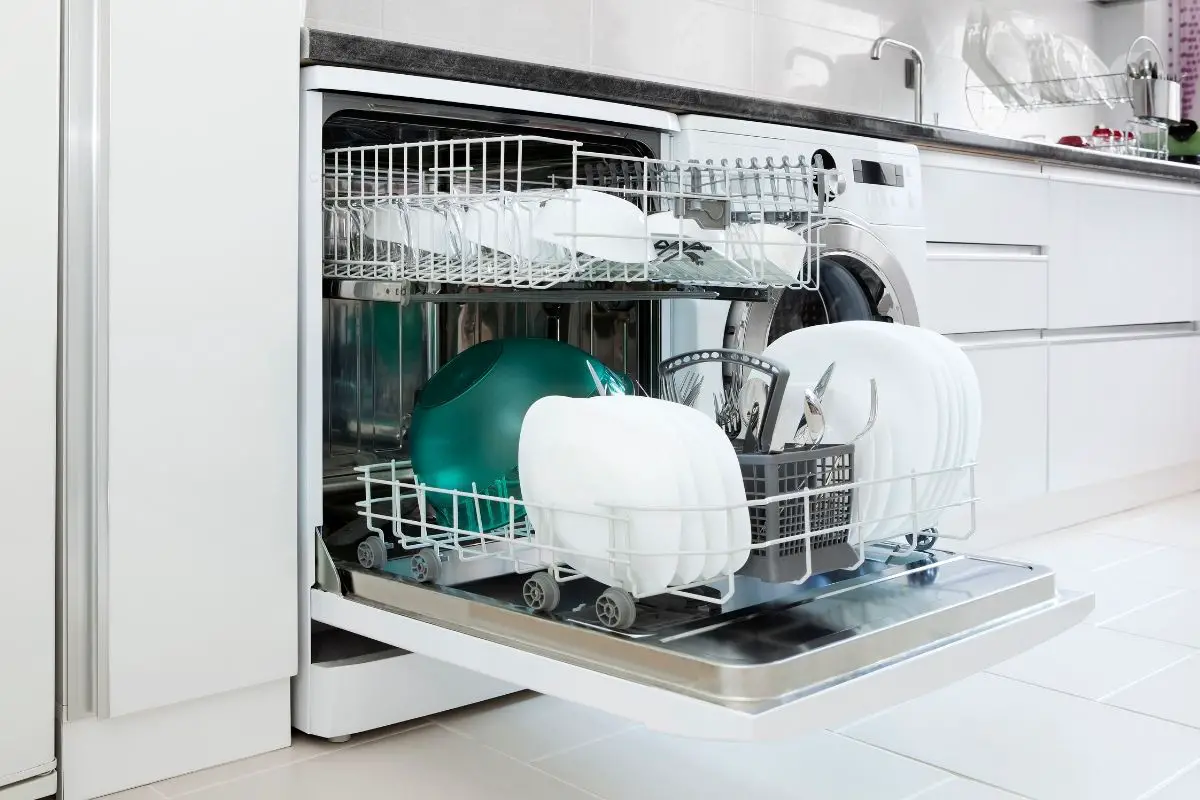
If water remains standing in the bottom of your KitchenAid dishwasher after a cycle, it is likely due to one or more of the following causes.
How do I know if my dishwasher drain pump is not working?
If your dishwasher is unable to completely drain or drains inefficiently, the most probable culprit is a defective drain pump. If you find that your dishwasher isn’t draining, ensure there are no blockages in the filter and make sure the hose linking it to your sink is not jammed.
How do I reset my Kitchenaid dishwasher?
If your KitchenAid dishwasher is not draining, you may need to reset it. To begin, shut off the dishwasher’s power at your circuit breaker or fuse box. Unplug the dishwasher from its power source and wait 5 minutes before plugging it back in. Turn on the power to the dishwasher. You should hear a beeping sound as it resets itself. Push the cancel button twice and then press start to reset the dishwasher’s cycle. This should clear any errors that were causing your dishwasher not to drain properly. If these steps do not resolve the issue, you may need to call a qualified appliance technician for further diagnosis and repair.
How do I know if my dishwasher inlet valve is clogged?
Blockages in the dishwasher’s inlet valve can be a nuisance, but they’re often easy to fix. Food particles or hard-water sediment are usually culprits for blocking up these valves – so keep an eye out and take action before any bigger problems arise. Take the plunge and test if your dishwasher’s inlet valve is clogged. Get hot water running through the sink closest to it, then see what happens – if draining takes a while, or stops completely, there could be trouble with your inlet valve.
Can I run a dishwasher with standing water?
No, running a dishwasher with standing water can cause numerous issues. Initially, your appliance may not be able to circulate and disinfect your dishes effectively. Second, standing water can cause more dirt and food particles to accumulate in the dishwasher, creating an unhealthy and unsanitary environment for future use.
Third, standing water can cause damage to the dishwasher’s internal components and increase the risk of a malfunction or breakdown. Therefore, it’s important to address any standing water issue as soon as possible.
Is there a drain button on the dishwasher?
The dishwasher provides practical convenience with its drain button, conveniently located either near the control panel or at the top of your door. Activate a cycle using this handy feature and let it run to effortlessly power through any washing challenge.
Useful Video: KITCHENAID DISHWASHER WON’T DRAIN – EASY FIX
Conclusion
If your KitchenAid is not draining properly, it is important to diagnose the problem and take action. If your dishwasher is not draining properly, it’s essential to understand the fundamentals of plumbing as you investigate potential causes and consider making repairs. Luckily, the majority of causes behind a dishwasher not draining are quite simple repairs that you can easily do yourself. If you want your dishwasher to start draining correctly again, these steps will help – from changing the drain hose to unclogging it. If the problem persists, it is best to consult a professional plumber to diagnose the issue and ensure that your dishwasher is functioning correctly.
References
- https://oakvalleyappliance.com/blog/kitchenaid-dishwasher-not-draining/
- https://producthelp.kitchenaid.com/Dishwashers/Dishwasher_with_Clean_Water_Wash_System/Cycles_and_Operation/Not_Draining%2F%2FWater_Remains/Not_Draining/Not_Draining_-_Dishwasher
- https://www.servicecare.net/blog/kitchenaid-dishwasher-not-draining-troubleshooting-guide/
- https://kitchenaid-appliance-repair-professionals.com/what-to-do-with-kitchenaid-dishwasher-not-draining/





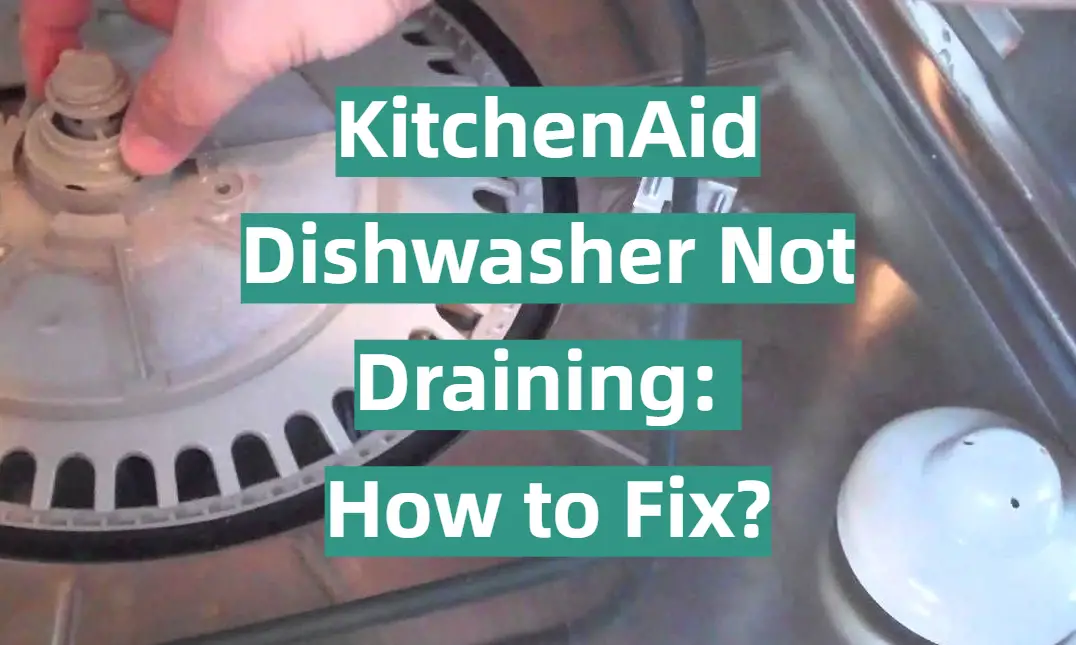




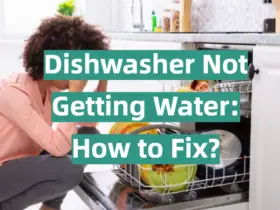
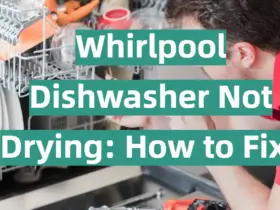
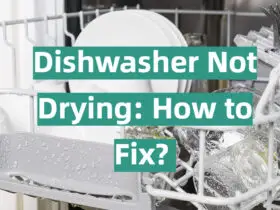
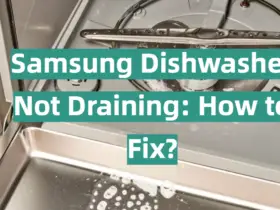
Leave a Reply